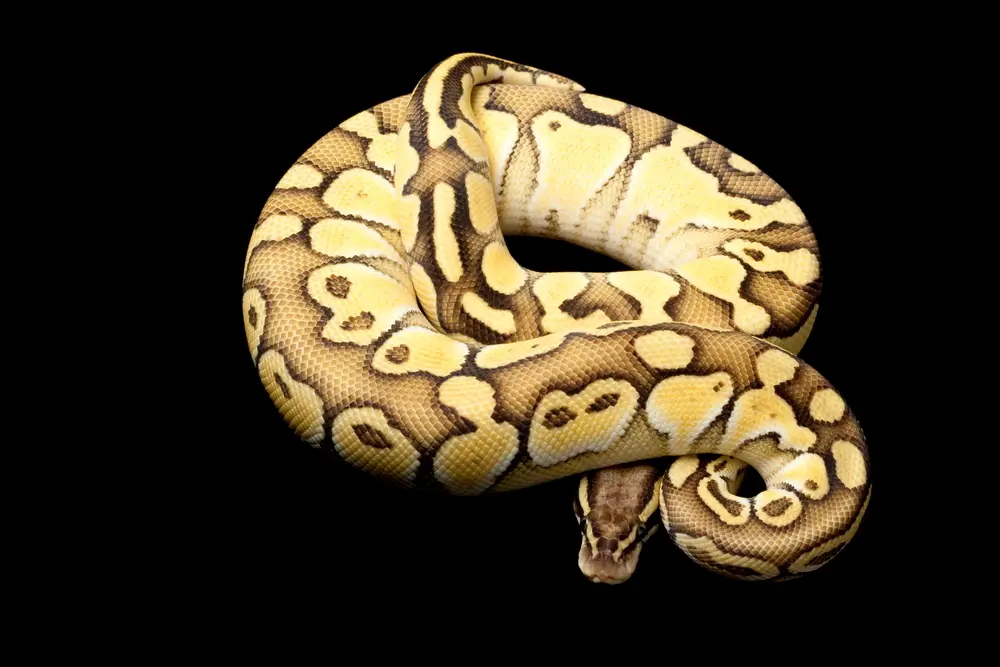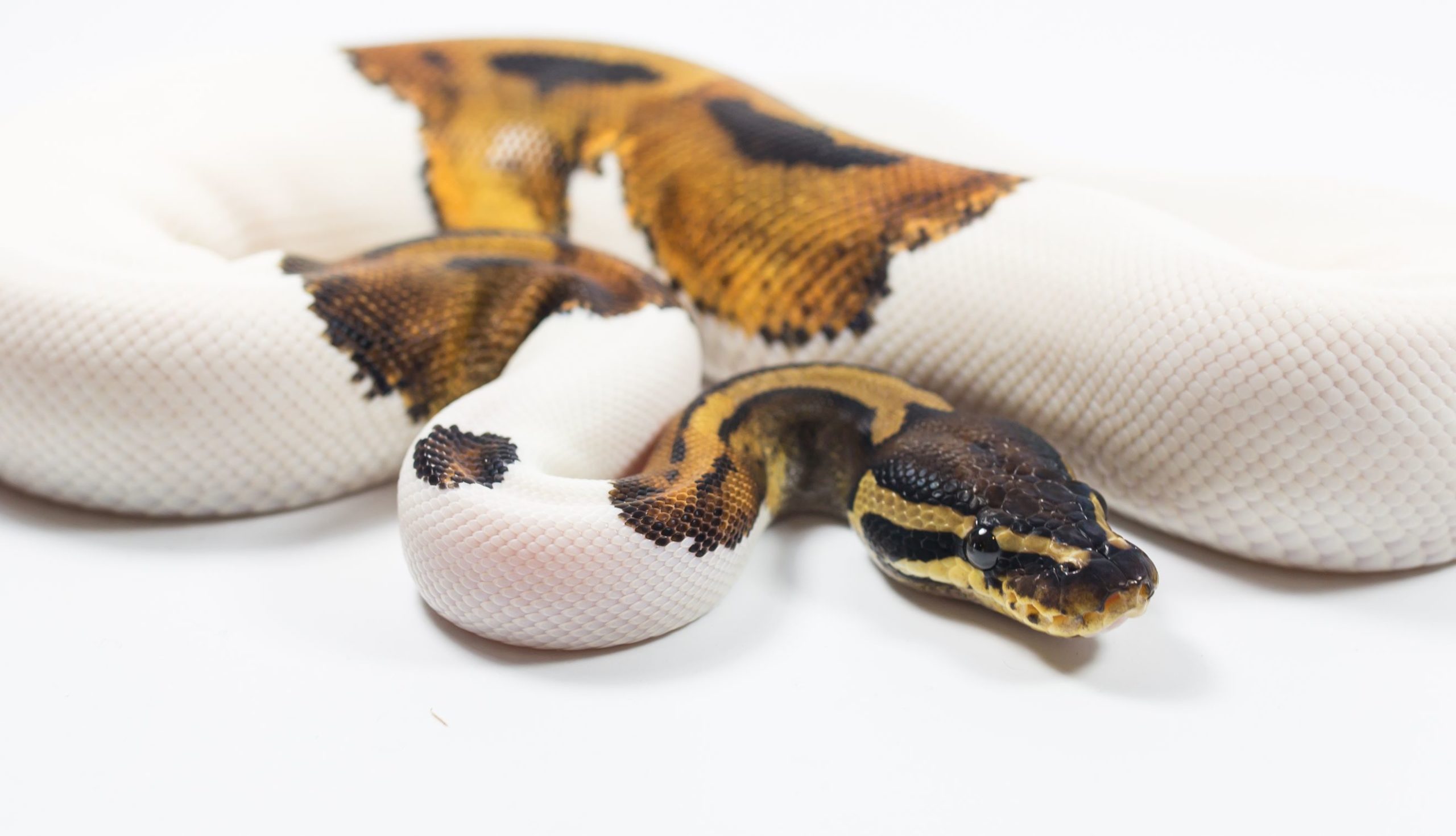How often should I clean my Ball Python’s tank? Today we’re going to look at how often to do it and why it’s important to do so.
You should clean your Ball Python’s tank whenever it makes a mess. This means spot cleaning every time it defecates or urinates by removing the surrounding substrate. To prevent illness, it’s also vital to completely clean and disinfect their enclosure every couple of months.
How often should I clean my snake tank?
It’s important to keep your Ball Python’s enclosure clean (or any or other snake’s for that matter). This is how you give them a high standard of hygiene, which translates into a long healthy life. With this in mind, I recommend doing a complete clean and disinfection of your snake’s tank every two months.
If you don’t clean their tank often enough, a variety of illnesses could set in. Scale-rot, for example, usually occurs after long periods of exposure to high bacterial growth, resulting from high humidity and poor hygiene.
Fortunately, cleaning a snake tank is easy! In fact, with this article, we’re going to tell you exactly how to do it by following 10 simple steps.
We’ll also discuss what spot cleaning is, how often to change your snakes bedding (substrate), and how often to change their water.

How often does a Ball Python poop?
Obviously, one of the main contributors to microbial growth in your snake’s enclosure is their poop. Though general hygiene is extremely important to combat overall bacterial and fungal growth, removing feces and urine/urates immediately is also vital.
When your snake makes a mess in its tank, it really can’t get away from it. And though it won’t make them ill right away, it will if it remains in the enclosure for too long.
How often you should expect your Ball Python to poop varies according to your snake’s age, and where it’s at in the breeding cycle. Most adults go every 7 to 21 days, often a few days after eating. They pee more often, however, and may pass urine and urates (solid pee) every week.
Urates are excreted along with urine, and look like hard, white pieces. Actual Ball Python poop, on the other hand, looks like brown to dark brown lumps, and may contain rodent hair.
As you might expect, babies poop more often. This is because they eat more often, and have higher metabolisms overall. Fasting adults are exactly the opposite, and may only go once a month.
Check out the table below to see how often you might be cleaning your Ball Python’s mess:
| Age: | How often they poop: |
| Hatchlings | every 3 to 7 days |
| Adults | every 7 to 21 days |
| Fasting adults | as little as once a month |
How to spot clean a snake tank
Spot cleaning a snake tank means you only clean the area that has been contaminated by a mess. This is a useful way to clean up poop, without going through the whole process of completely cleaning the enclosure. It lets you eliminate the germ-spreading potential of the poop, even if you don’t have time for a full clean.
To spot clean a snake tank, simply pick up the poop with a tissue or paper towels and dispose of it. At the same time, make sure you remove any substrate that has been contaminated by it. You can then wipe down the surface underneath with some warm water and put substrate back over the top.

How to completely clean a Ball Python tank in 10 steps
Ball Pythons are stressy little creatures. They get upset when we subject them to too much change, or when we remove them from their enclosure for too long.
To mitigate the potential stress from enclosure cleaning, it’s important to plan the activity and get it done as quickly as possible. The sooner your snake is back in its home, the less stressed it will become.
With this in mind, we’ve outlined 10 steps to go through for a full Ball Python tank clean:
- Prepare a holding tank. This can be a plastic tub or another unoccupied enclosure. Whatever it is, just make sure it has a secure lid and air holes for breathing.
- Turn off your snake’s thermostat/heating equipment.
- Remove all substrate. In larger setups, it may be helpful to also vacuum in the corners, or use a damp cloth to get the dust out.
- Clean all surfaces using your choice of disinfectant (more on this in a moment). If you intend to use bleach, take the enclosure to a room away from animals to clean it.
- Wait 5 minutes for disinfectant to act. Wipe down all surfaces to remove excess disinfectant until dry. Some disinfectants may act faster, but read the instructions to make sure.
- Clean all furniture, hides and bowl. If urates are stuck to the hide, use a bristle brush or grill brush to remove them completely.
- Allow everything to air, preferably with a window open or outdoors for half an hour.
- Add new substrate and put back decorations.
- Turn the thermostat/heating equipment back on and let temperature stabilise.
- Put the snake back!
Soaps and disinfectants for cleaning
Generally, veterinary disinfectant is the safest option when cleaning long-term captives. That said, bleach is your best option when cleaning newly acquired vivariums or furniture that are from pet shops and could have come into contact with Cryptosporidium serpentis. This is a highly contagious Coccidian parasite that kills snakes and is not killed by most disinfectants.
Personally, I prefer not to use bleach on any wood decorations or enclosures as it can soak into them. I also recommend using a lower percentage than many other sources advocate.
Often, we’re told to clean enclosures with a 10% bleach solution, but I think it’s better to play it safe and use a 5% solution instead. After all, we’re talking about one of the deadliest disinfectants on the planet!
Safer alternatives to bleach include veterinary disinfectants that contain chlorhexidine, or alkyldimethylbenzylammonium chloride (ADBAC) and similar compounds. These are often advertised as “reptile terrarium cleaner.”
Whatever you decide to use, always check out online reptile forums to make sure that other keepers have successfully used it!
Using vinegar to clean a snake tank
Another very widely used disinfectant for snake enclosures is 6% vinegar. This will kill some germs, and is less toxic to both people and animals. It’s also cheap… The drawback, however, is that it can’t kill some bacteria, viruses and protozoa. Personally, I would prefer a disinfectant containing chlorhexidine to vinegar.
How often to change snake bedding
If your snake has in its digestive tract either parasitic, commensal or opportunistic Protozoa, they can eventually become a problem if the vivarium never has its substrate completely removed.
This is because in the wild animals can move away from any mess they make. The parasites in their excrement are left behind, and in this way the number in their gut is kept from growing exponentially.
In captivity, on the other hand, they have to sit next to their mess until we come and clean it up! If we don’t do a good enough job of cleaning, pet reptiles can end up ingesting extra parasites that they had previously excreted and be overwhelmed by them.
One particularly common kind of illness that occurs in this way is Coccidian infection (Coccidiosis). Though some types of Coccidia are deadly and contagious – such as Cryptosporidium serpentis – others only cause problems when very poor hygiene is present.
In the same, way bacteria and fungi will profit from poor hygiene and multiply in the substrate. Over time, they can also overwhelm your snake’s immune system, causing various illnesses.
The best way to keep the number of Coccidia, bacteria, fungi and other microorganisms in your snake’s enclosure low is to regularly change the substrate. You should completely change the substrate every two months, at the very least. Do it at the same time you do a complete clean and disinfection.
How often should you change snake water?
A snake’s water should be changed every few days. When you change it, disinfect the bowl or rinse it with boiling water. After you’ve done this, wipe around the inside of the bowl until you get a nice “scrunching” noise when you run your fingers across it. You shouldn’t feel any sliminess.

What happens if you don’t clean your snake’s tank?
Most Ball Pythons do in fact have Protozoa in their digestive tract, just like we do. They also have bacteria and fungi that occur in low numbers in their enclosures. As long as you maintain proper hygiene, these bugs can never become a problem. Again, just like us.
Notwithstanding, just because they aren’t generally a problem, it doesn’t mean they don’t have the potential to become one. If allowed to keep growing and multiplying in an unhygienic tank, microbes can cause a range of common snake diseases.
The most likely bacterial and fungal diseases to arise from poor hygiene are Necrotizing dermatitis (Scale rot), Respiratory infections and Nectrotizing stomatitis (Mouth Rot).
The Bottom Line
As a snake keeper, it’s important to know the value of spot cleaning, full cleaning, and substrate changes.
Remembering when to spot clean is simple: whenever you spot a mess in your snake’s tank, you need to spot clean!
A full clean and substrate change on the other hand, should be something you put on your calendar. To make things easier, it’s also a good idea to set a reminder on your phone, so that you get a notification a couple of days before cleaning is due.
Obviously, when you do a full clean and disinfect, you should always completely replace the substrate.
Keeping on top of hygiene in this way is the best way to extend your snake’s lifespan. Don’t underestimate how important it is!
Also on this topic:
- Ball Python Scale Rot: How to understand and treat it
- Ball Python noises *Includes information on diagnosing Respiratory infections
- How long do Ball Pythons live?
- Can I take my Ball Python outside?
- Can I leave my Ball Python alone for a week?
- Do Ball Pythons sleep?
For more on hygiene in general:
Back to the health and hygiene page
